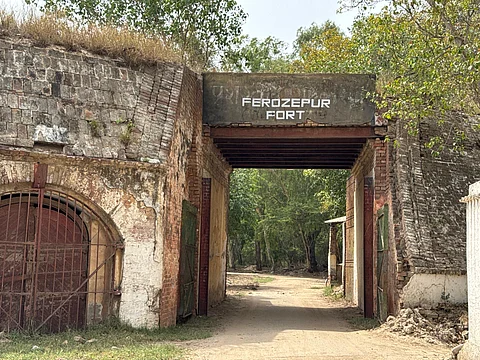
- Destinations
- Experiences
- Stay
- What's new
- Celebrating People
- Responsible Tourism
- CampaignsCampaigns
- Subscribe
- Buy Now

The Indian Army's Golden Arrow Division has opened the historic Ferozepur Fort to tourists for the first time in more than 200 years, marking a major step in promoting heritage tourism and re-establishing a connection between the general public and India's rich military past. The fort, which is situated in Punjab close to the India-Pakistan border, is a reminder of the area's strategic significance and rich history.
Brigadier Bikram Singh, Station Commander and President of the Ferozepur Cantonment Board; and Major General Ranjit Singh Manral, General Officer Commanding, Golden Arrow Division, attended the recent inauguration ceremony at Ferozepur Fort. Opening the fort is in line with the army's commitment to fostering border tourism and conserving the country's rich history, Major General Manral said.
The Army Public School in Ferozepur took the step of adopting the fort for research. Two students led tours during the opening, demonstrating the young people's involvement in protecting and promoting local history.
The opening of the fort is anticipated to increase tourism in Punjab's border region by providing tourists with an insight into the region's rich military history. Now serving as both a historical landmark and a beacon for future generations to discover and value India's rich legacy, Ferozepur Fort is a testament to tenacity and historical relevance.
Ferozepur Fort, which was built during the Sikh Empire, was an important outpost in the empire's network of frontier defences. Its distinctive hexagonal shape and strong defensive elements are prime examples of the military architecture of the 19th century's strategic inventiveness. The fort witnessed acts of bravery and resistance during the First War of Independence in 1857, and it played a crucial role in that conflict.
After Sardarni Lachhman Kaur died in 1835, the Duke of Wellington ordered the British to take control of the fort and turn it into a garrison by 1839. It had an arsenal producing different kinds of munitions by 1858. Records show that at any given time, there were roughly 10,000 bullocks, as many horses, and 150 camels at the fort. The fort was later converted into a base depot that supplied weapons, ammunition, and trained animals.
In addition to being famous in India, the fort was also mentioned in Adolf Hitler's autobiography, "Mein Kampf." Hitler viewed the city and the fort as important targets during World War II after noticing British ammunition bearing the name "Ferozepore."
